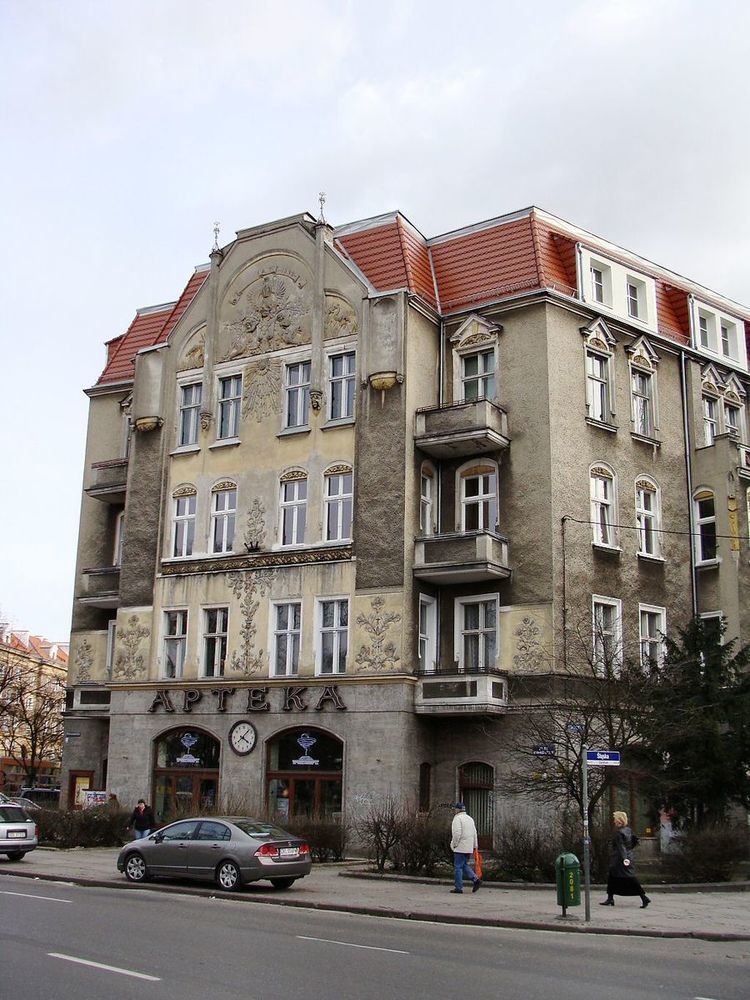 | ||
A community pharmacy is a healthcare facility that emphasizes providing pharmaceutical services to a specific community. Typically, a registered pharmacist dispenses medicine from the community pharmacy.
Contents
Characteristics of a good pharmacy
The American Association of Colleges of Pharmacy recommends that consumers choose a pharmacy at which they can have a consulting relationship with the pharmacist. Anyone using drugs benefits when they have easier access to a pharmacist who is knowledgeable about their care.
A good pharmacy will be able to provide drugs in a timely manner. Being timely includes both processing the request quickly and having drug stock available to fill the prescription. Some consumers need drugs delivered to their home, perhaps by mail, and may select a pharmacy which offers that service. Different pharmacies may charge different prices for the same drugs, so shopping for lower prices may identify a pharmacy offering better value. In addition to fulfilling prescriptions, a pharmacy might offer preventive healthcare services like vaccinations. Up-to-date technology at a pharmacy can assist a patient with prescription reminders and alerts about potential negative drug interactions, thereby reducing medical errors.
Duties
The International Pharmaceutical Federation has declared their vision of a community-based pharmacist:
Responsibilities
Community-based pharmacists' responsibilities include: checking and dispensing of prescription drugs, providing advice on drug selection and usage to doctors and other health professionals and counseling patients in health promotion, disease prevention and the proper use of medicines.
In most countries regulations govern how dispensaries may operate, with specific requirements for storage conditions, equipment and record keeping.
Clinical roles
It is becoming more common for pharmacists to take on extended roles that provide more clinical care directly to patients as part of a primary care team. There are around 11,400 community pharmacies in England. Many are open for extended hours in the evenings and weekends and they are accessible without appointment.
United Kingdom
In the English NHS there are 438 million visits nationally to community pharmacies a year for health related reasons. More than 1 billion prescription items were dispensed in 2012. More than £14 billion is spent on prescribed drugs annually. Under the 2005 NHS Community Pharmacy contract all community pharmacists in England and Wales provide:
Widely available Advanced Services:
Enhanced Services which are not available unless locally commissioned:
Support staff
To help pharmacists be able to take on extended roles, it is common for them to work as part of a team that can include pharmacy technicians, dispensing assistants and counter assistants....
Ownership
In parts of mainland Europe, the pharmacist is required to own the pharmacy of which she or he is the licensee. Under this arrangement, a pharmacist can be the operator of only a single outlet. In the UK, 60% of all community pharmacies are owned by companies that own multiple pharmacies.
In the United States, more than 25% of independent owners have ownership in two or more pharmacies.
Most of New Zealand's community pharmacies are owner-operated. In Australia, pharmacists recognise the need to integrate professional pharmacy services into the health system to meet the changing health care needs of the population.
